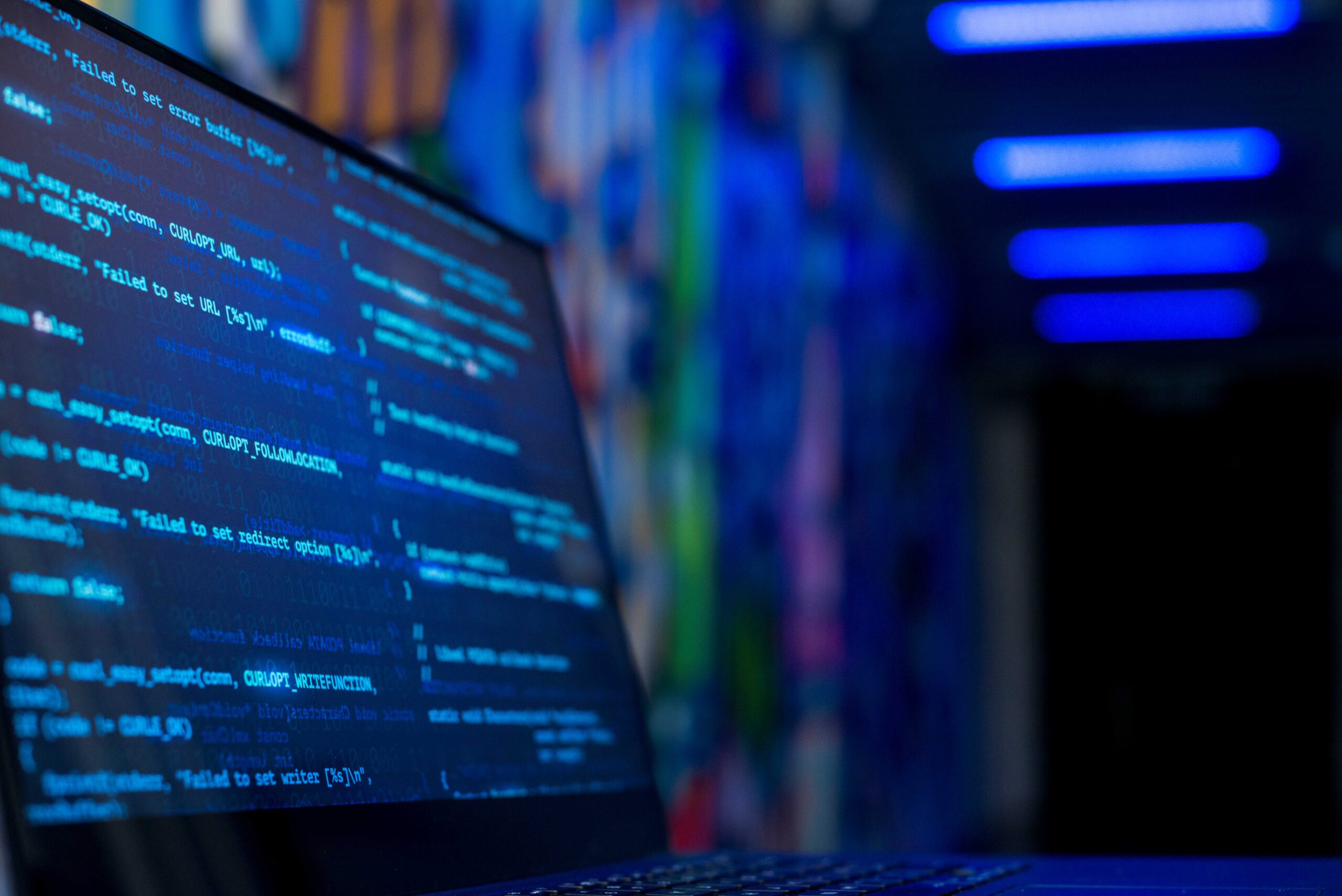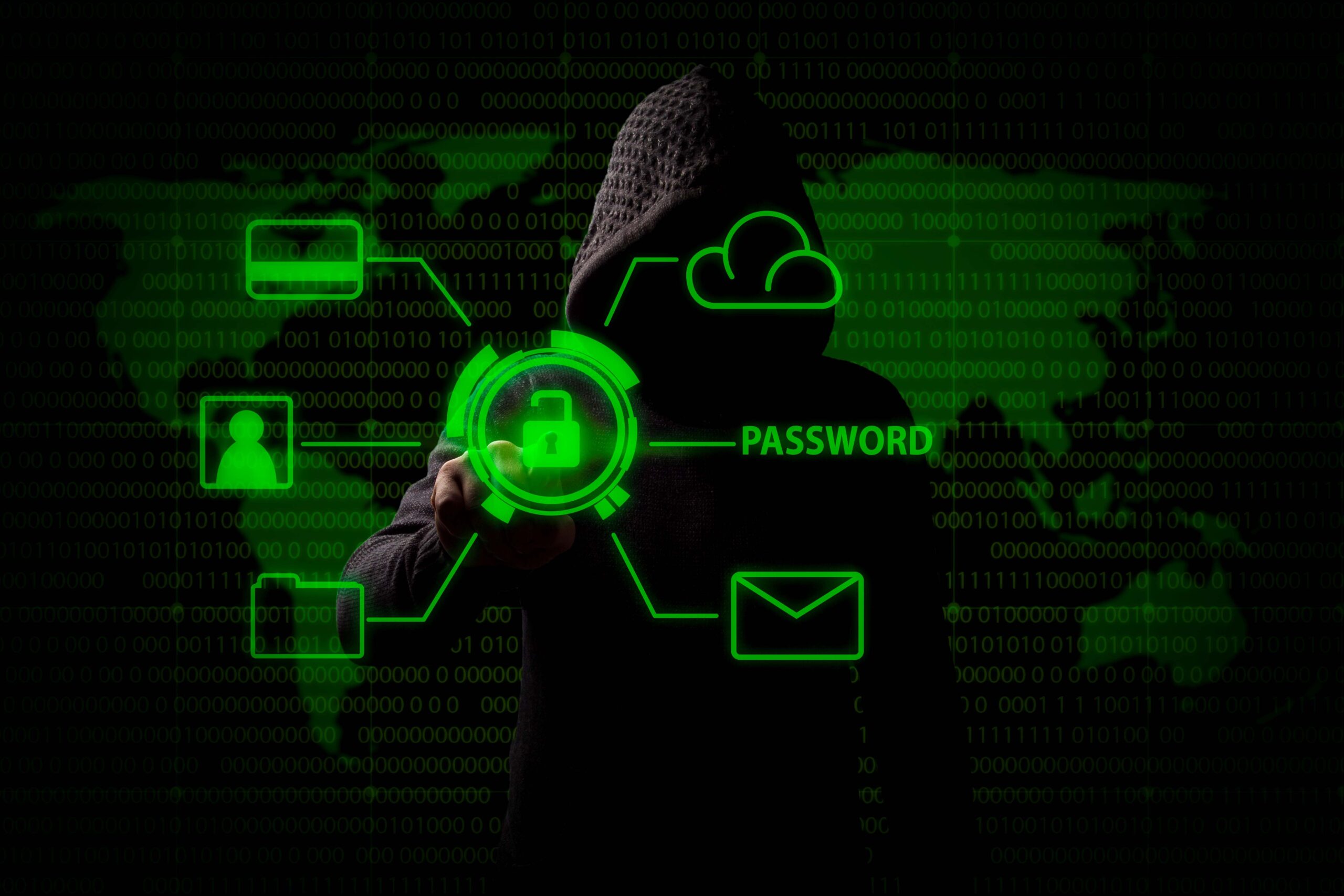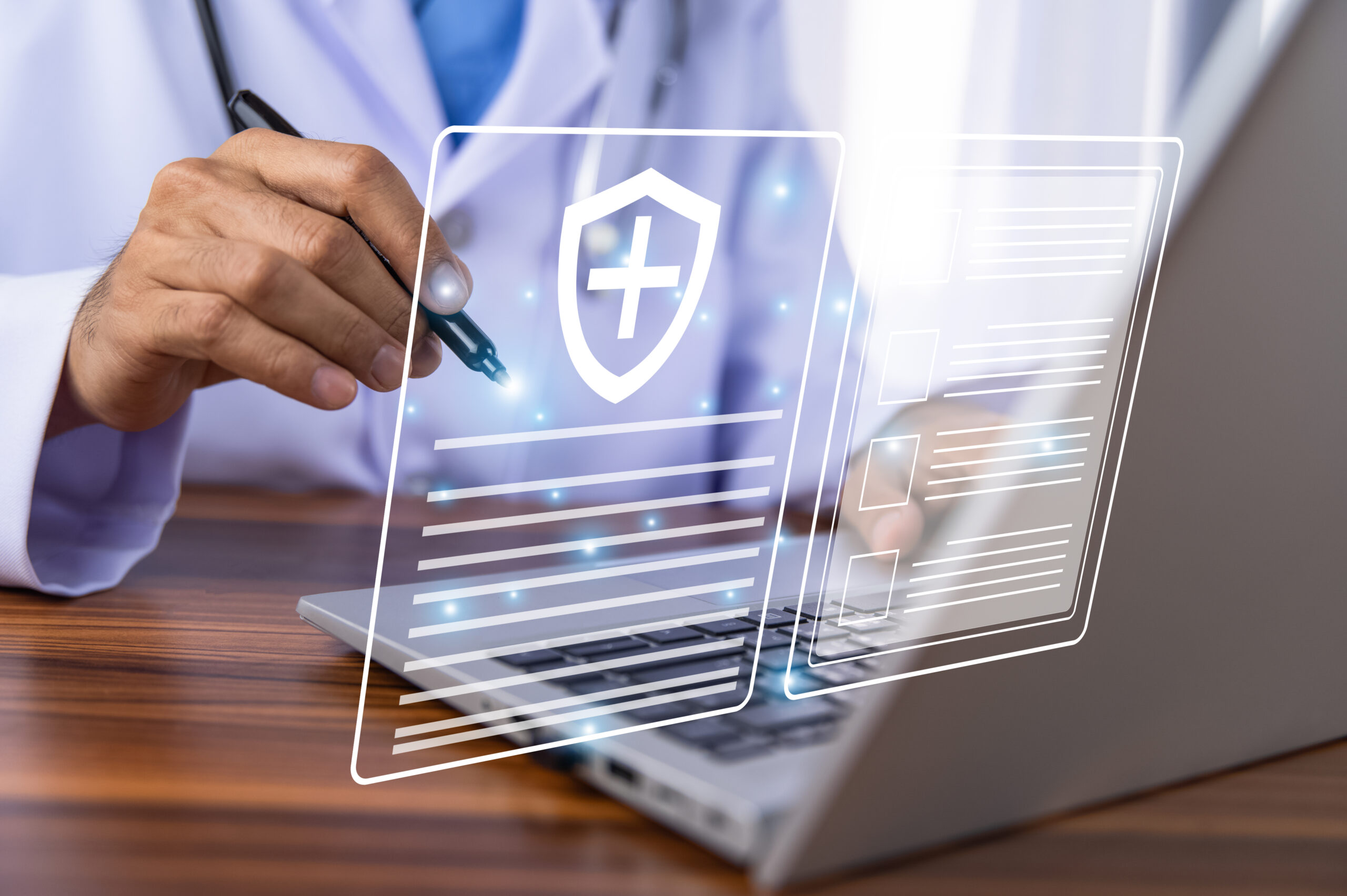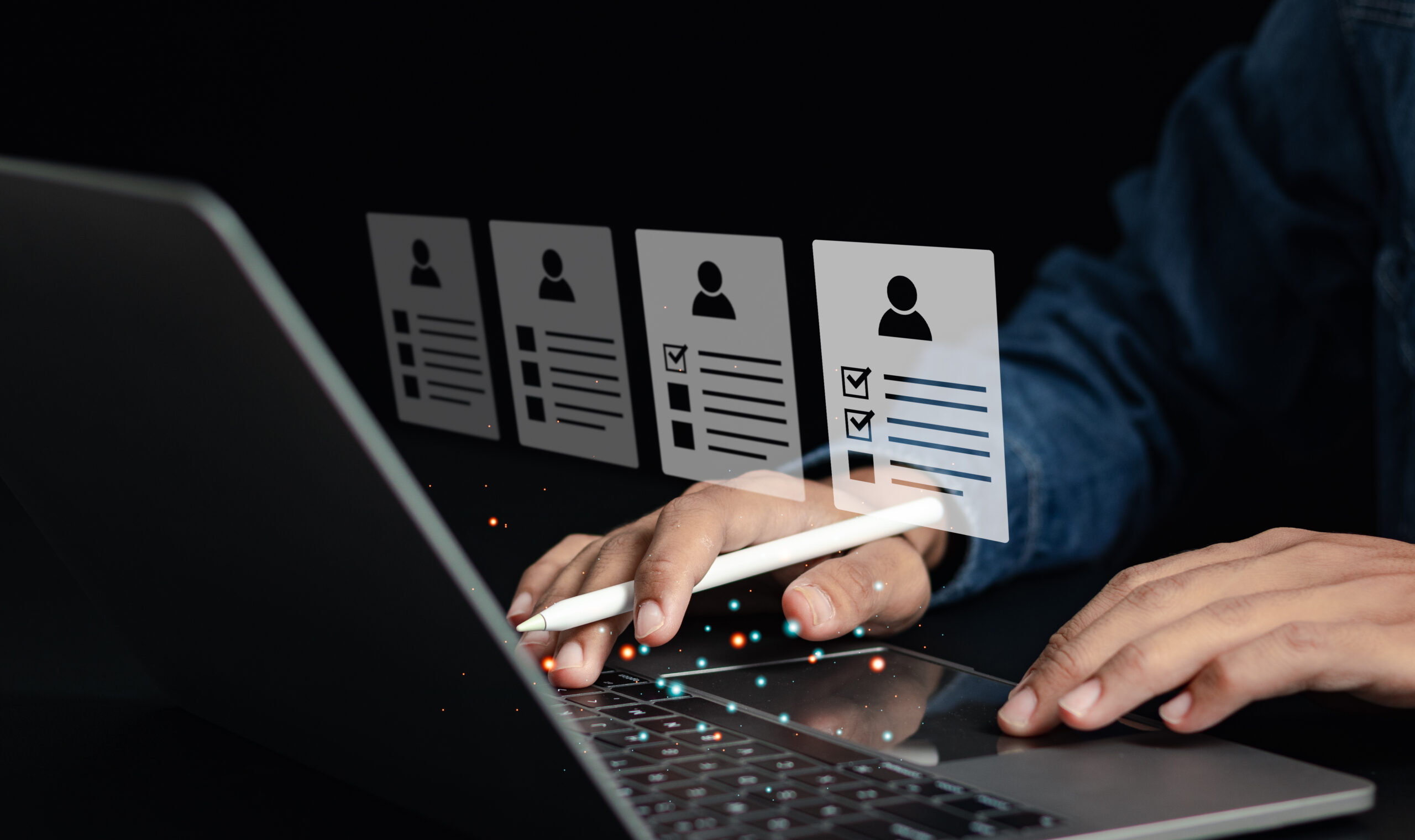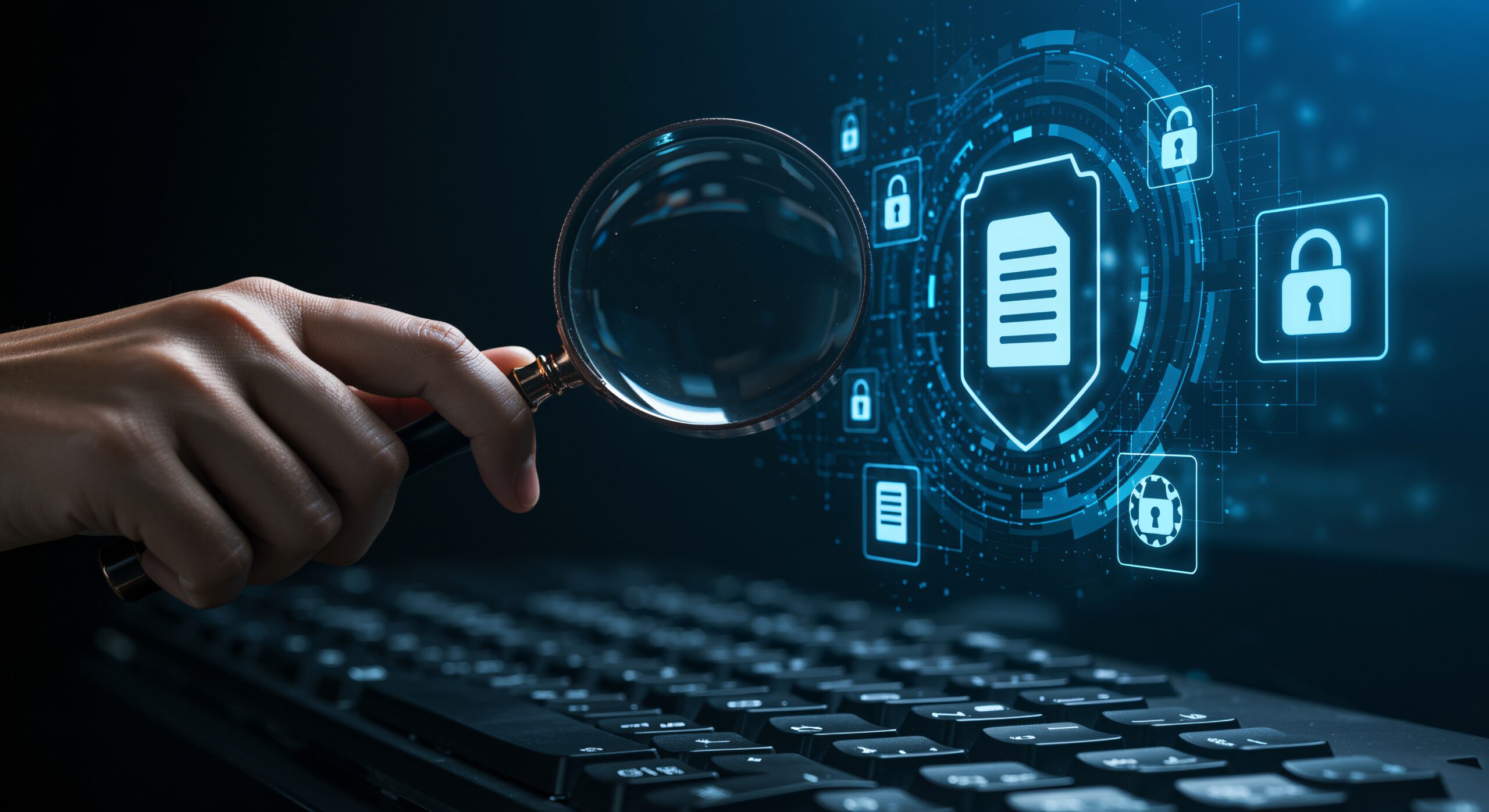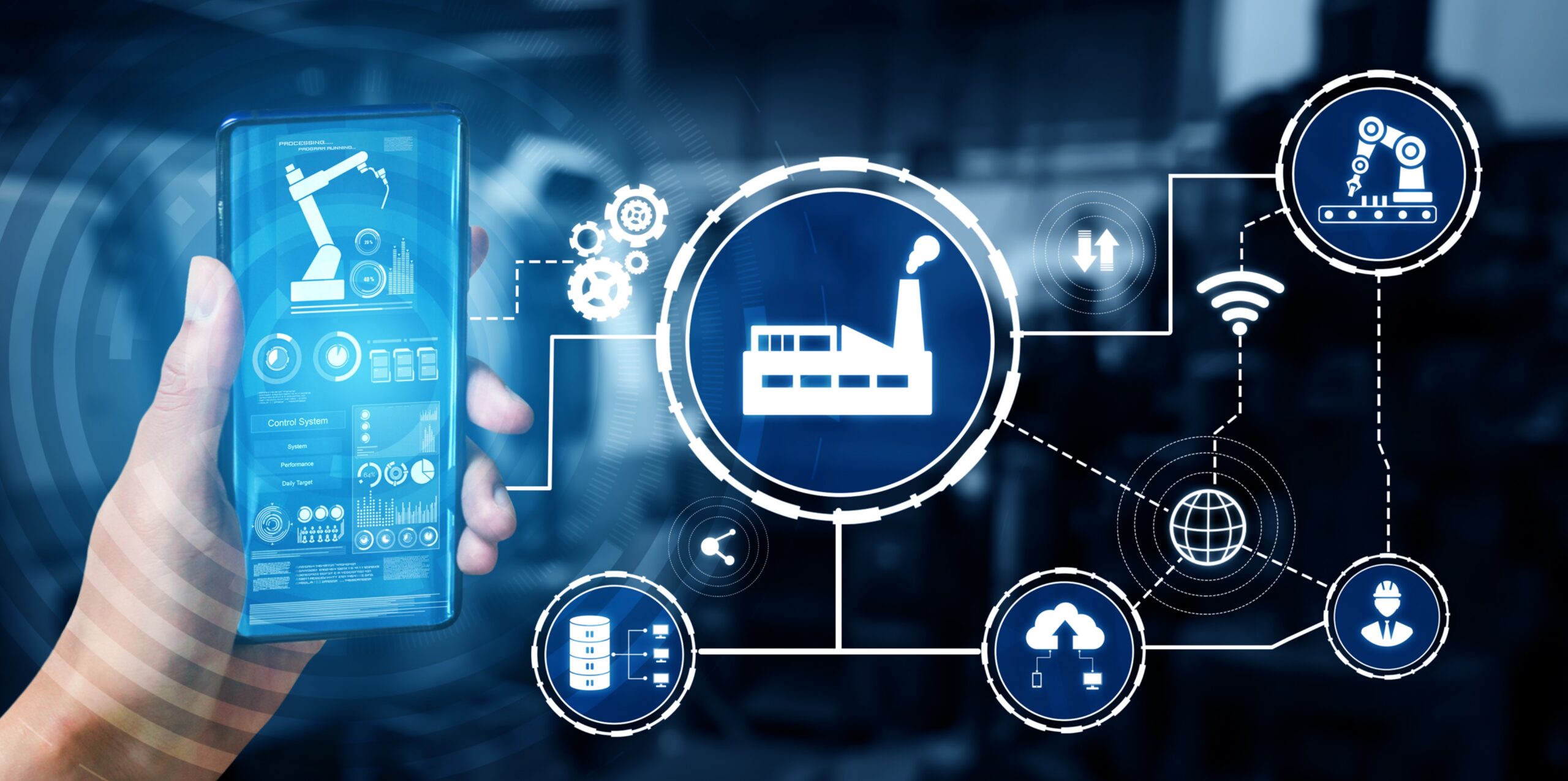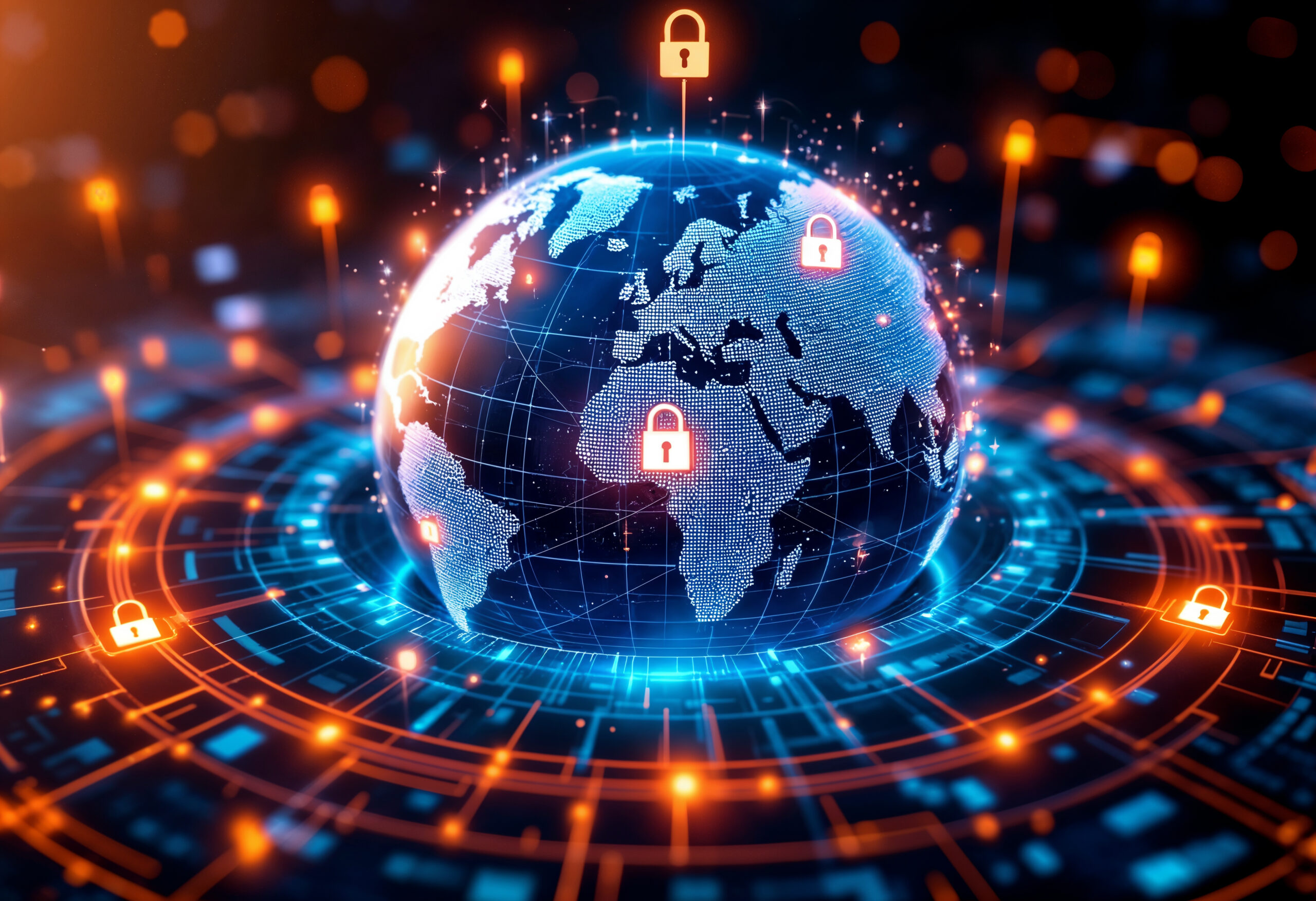9 healthy digital habits that will protect you from identity theft and leaks
We live connected lives. We check our phones before breakfast, share photos, use the cloud, shop online, and work remotely… and sometimes, without realizing it, we leave doors open for cybercriminals to exploit.
Identity theft and personal data leaks are the order of the day.And you don't have to be famous or work for a multinational company to be objective. Just having an email address or active social media accounts is enough.
In this context, maintaining healthy digital habits isn't just advisable: it's essential. Protecting our digital identity should be part of our daily routine.
Some tools can help, such as Qondar,which is our solution designed for individuals. Through Qondar, you can monitor your online exposure in real time, detect if your data has been compromised, and receive alerts when your digital security is at risk.
Good Healthy digital habits to protect yourself
1. Change your passwords regularly
Although it may seem like a basic recommendation, most people have continued to use the same passwords for years.. The worst part is that they often reuse the same key for everything. This is like having one key for your house, car, and office.
Use different passwords for each account, change them every three or four months, and rely on secure password managers whenever possible.. Do you have any clues about whether yours has been stolen? Qondar can help you detect it.
You may be interested in→ How to manage business passwords and credentials easily and securely to avoid online threats.
2. Activate two-step verification
Also known as two-factor authentication (2FA), it's one of the most effective measures against unauthorized access. Even if someone gains access to your password, they won't be able to log in without that second step (usually a code you receive on your phone).
Almost all major platforms offer this free option, which can save you from a big scare.
3. Be wary of suspicious links
You receive an email claiming to be from your bank but asking you to click a link and update your information, or a message on social media with a shortened link and no context. Be very careful: you could be facing a case of phishing.
Always check the sender. Do not click on dubious links or provide personal information outside of official channels.. If you have any doubts, it's best not to interact.
4. Update your devices and apps
Yes, sometimes updating the operating system of your mobile or computer can be a pain, but these updates often include crucial security patches.. Older versions are fertile ground for cyber attackers.
Configure automatic updates and ensure your apps come from official sources (App Store, Google Play, etc.).
5. Be careful with public Wi-Fi networks
Connecting to Wi-Fi at the airport or mall is fine for checking the weather or reading the news, but you should not use it to perform sensitive tasks such as accessing your online banking or sending important documents.
If you need to, you'd better use a VPN (Virtual Private Network). These tools encrypt your connection, making it much harder for someone to intercept what you're doing.
6. Review your app permissions
Many apps ask for access to your camera, contacts, and location; often, they don't need it to work. Automatically granting permissions can put you at risk.
Take a few minutes to review your apps' permissions on your mobile or browser and modify those that are not strictly necessary.

7. Be careful what you share on social media
Posting vacation photos while you're away from home, showing tickets with QR codes, giving out personal details (like your address or phone number) on public profiles... This may seem innocent, but it can be used against you.
Think before you post and check your privacy settings.. Not everyone needs to know everything about you.
Access our post→ Public image on the internet: how to protect it from digital risks.
8. Do regular digital cleaning
Do you have old accounts you no longer use? Apps you've installed for years? Every profile and every app is a potential entry point for cybercriminals.
Delete accounts you no longer need,delete unused apps, and back up your important data. Qondar can also help you identify the data you still have floating around online.
9. Monitor your digital footprint with tools like Qondar
Did you know that databases containing millions of leaked emails, passwords, and phone numbers are being sold on the dark web? And often, those affected don't even know it. So, being vigilant and learning how to erase your digital footprint is essential
This is where tools like Qondar become crucial. This tool alerts you if your email appears in a leak,your password has been compromised, or your identity has been stolen. It's like having a personal security guard for your digital identity, working 24/7.
Why does all this matter so much?
According to the report IBM Cost of a Data Breach 2024, the average global cost of a personal data breach amounts to $4.88 million. While this data typically refers to companies, individuals suffer consequences, from financial losses to legal issues and reputational damage.
Having healthy digital habits doesn't make you invulnerable, but it significantly reduces your chances of falling victim to identity theft or a data leak. Just as you don't leave your front door unlocked, you shouldn't expose your digital identity.
Protect yourself today with Qondar
If you want to go further and have absolute control over your digital exposure, try Qondar by Enthec. It's intuitive, effective, and designed for people like you, who don't necessarily need to be cybersecurity experts, but still want peace of mind.
Start protecting your digital identity today. Take advantage of all Qondar's benefits and discover how we can help you.
Technology makes our lives easier, but it also demands responsibility. Implementing these nine healthy digital habits is a simple but essential step toward a safer digital life. Remember: It is not about living in fear but with awareness. And with the right tool,s you can do it with confidence.
Main advantages and disadvantages of pentesting in a company
Cybersecurity is, now more than ever, a priority for any organization. As digital threats evolve, so must the strategies to detect and prevent them.
In this context, pentesting (or penetration testing) has become a key practice for assessing the security level of a company's computer systems.
But is it enough to make a pentesting punctual? What limitations does it have? And most importantly, how can a company complement this practice to maintain an active and continuous security posture?
Throughout this article, we will answer these questions, addressing the main advantages and disadvantages of pentesting, and analyzing how tools such as Kartos by Enthec can take threat management further.
What is pentesting, and what is it for?
Pentesting, also known as pentesting, consists of a controlled simulation of a computer attack to detect vulnerabilities in systems, networks, applications, or IT infrastructures. That is, it is about putting yourself in the shoes of an attacker to see what weaknesses could be exploited.
This exercise, conducted by security experts, allows organizations to identify critical failures before cybercriminals can exploit them. It's one of the most direct ways to test whether current security measures work.
Main phases of pentesting
A professional penetration test usually follows a well-defined methodology. These are the main phases of pentesting:
- Recognition: collection of information about the target (such as IP addresses, domains, services, etc.).
- Scanning and enumeration: identification of active systems and open services.
- Exploitation: attempt to exploit detected vulnerabilities.
- Privilege escalation: if access is gained, an attempt is made to increase control.
- Pentesting report: compilation of all findings, including vulnerabilities, risk level, and recommendations.
The pentesting report is, in many cases, the starting point for correcting security errors and strengthening systems.

Highlighted advantages of pentesting
1. Discovery of real vulnerabilities
Unlike automatic scanners, pentesting goes further by reproducing real attack scenarios. This allows for detecting weaknesses that could go unnoticed by other methods.
2. Impact assessment
Pentesting not only identifies vulnerabilities but also helps measure the real impact they could have if exploited. This helps prioritize the most urgent corrective actions.
3. Improved security awareness
Performing pentesting periodically allows technical and management teams to better understand the risks they face. It can also serve as a basis for internal training plans.
4. Regulatory compliance
Many safety regulations and standards (such as ISO 27001, PCI-DSS, or RGPD) recommend or require penetration testing as part of security audits.
Disadvantages of pentesting
Although it is a very valuable tool, pentesting is not without limitations. Knowing your weaknesses is key to complementing this practice effectively.
1. Photograph of a specific moment
One of the biggest drawbacks of pentesting is that it offers a static vision of security: Analysis is performed at a specific point in time. Without ongoing review, new threats can easily slip under the radar.
2. It does not cover 100% of possible vectors
No matter how hard you try to cover all fronts, there is always a margin of error. New vulnerabilities may emerge the next day of the test, or even remain hidden during the test.
3. Economic cost and limited resources
Pentesting requires time, qualified experts, and sometimes a considerable investment. Furthermore, their frequency is limited by the available budget.
4. Operational risk
Although controlled tests, pentests can generate interruptions or system crashes if not executed cautiously.
Kartos: the perfect complement to pentesting
This is where Kartos, Enthec's solution for companies, comes in. While pentesting gives us a snapshot, Kartos offers continuous cyber surveillance, allowing changes in a company's exhibition area to be detected almost in real time.
Kartos is designed as a Continuous Threat Exposure Management (CTEM) tool. This means that instead of performing an annual or semi-annual review, it maintains constant monitoring, detecting new vulnerabilities, incorrect configurations, or information leaks on the network.
Its advantages include:
- Early detection of threats that may appear between pentestings.
- Automated and updated monitoring, without the need for constant manual intervention.
- Global visibility of the organization's external exposure, including domains, subdomains, services, open ports, and more.
- Proactive alerts to avoid unpleasant surprises.
Are pentesting and Kartos mutually exclusive?
Not at all. In fact, they are complementary strategies. Pentesting remains essential to validate security from an offensive perspective, but does not replace the need for constant vigilance.
Imagine a company that conducts a pentesting in January. By March, it had implemented new cloud services, incorporated new technologies, and suffered a data breach in an external environment. If the company doesn't have a tool like Kartos, it will not see these changes until the next test, which may be several months away.
The combination of both approaches allows for a comprehensive and adaptive coverage in the face of current risks.
Thinking beyond pentesting
Pentesting is, without a doubt, a crucial piece in any company's cybersecurity strategy. But it is not enough to take a test occasionally and consider the issue resolved.. The changing nature of the digital environment demands a continuous, dynamic, and automated approach.
Kartos responds to this need, complementing the work of the pentesters with an up-to-date and persistent view of threat exposure. Thanks to its CTEM approach, it helps companies always stay one step ahead, minimizing risks and improving their overall security posture.
Do you want to see how Kartos can help you keep your business protected beyond the pentesting? Request a demo in Enthec and discover the future of continuous cybersecurity.
Interested in learning more about how to proactively protect your business?
Know more about our Kartos and Qondar Solutions. Cybersecurity isn't a checkpoint; it's a continuous journey.
Passive cybersecurity attacks: Keys to identifying these types of invisible threats
When discussing cybersecurity, we often imagine exaggerated and obvious attacks: viruses that lock your computer, malicious emails demanding ransoms, or fake websites trying to steal your passwords. However, other types of threats are much more silent, but equally dangerous: the passive attacks in cybersecurity.
These attacks sneak in, watch, and wait. And that's precisely why they're so difficult to detect. In this article, we'll unravel what they are, how they work, and, most importantly, what you can do to protect yourself, whether you are a company or browsing as a private user.
What is a passive attack in cybersecurity?
In cybersecurity, a passive attack is one in which the attacker does not directly interfere with the system's operationbut rather simply spies, gathers information, or monitors network traffic without detection. Unlike active attacks, which seek to modify, damage, or control a system, passive attacks act as invisible observers.
Some typical examples of this type of threat include:
- Packet sniffing on public or poorly protected networks.
- Passive tracking to obtain browsing habits or device data without the user's consent.
- Monitoring encrypted communications, waiting for vulnerabilities to exploit in the future.
These attacks may seem less aggressive, but the information they collect can later be used for targeted attacks, blackmail, or impersonation.. In addition, many cybercriminals use this data as raw material to sell on the dark web.
Why are passive attacks so dangerous?
The main problem with passive cybersecurity attacks is that they go unnoticed for long periods.. They don't generate any prominent warnings, and in many cases, the victim won't even know they've been spied on.
This allows the attacker to:
- Gather detailed information about his objectives (IP addresses, browsing habits, credentials, etc.).
- Wait for the best moment to act (for example, to launch a follow-up active attack).
- Design social engineering campaigns that are highly personalized and effective.
That is to say, a Passive attack is the first silent step before a more decisive blow.
Passive cybersecurity: a contradiction?
The term passive cybersecurity can be confusing. It sometimes refers to measures that don't act directly on a threat but merely observe or record it. However, when discussing in cybersecurity, passive tracking refers to monitoring a malicious actor's actions without directly intervening in the systems.
We must not confuse legitimate surveillance with malicious spying. Today, many platforms monitor user behavior to offer personalized services. But when this monitoring is carried out without consent, for opaque purposes, or by external actors, it goes from legitimate to dangerous.

How to detect a passive attack: Main signs
Detecting a passive attack can be tricky,but it's not impossible. Some signs can help you identify that something isn't right:
1. Unusual activity on your networks or devices
If you notice a strange use of bandwidth, suspicious connections, or unexpected encrypted traffic, it may be a sign that someone is listening.
2. Too many coincidences
If you start receiving very personalized phishing campaigns, messages with details that should only be known by legitimate sources, or targeted attacks, someone may have been collecting information before without realizing it.
3. Cybersecurity tool alerts
Good security systems don't just act against active attacks. Some advanced threat management systems, like the ones we offer from Enthec, allow you to identify suspicious patterns even in quiet environments.
How to protect yourself? The importance of continuous cyber surveillance
In a world where threats don't always make noise, prevention becomes your best ally,. and this is where a key concept comes in: Continuous Threat Exposure Management (CTEM).
This approach is not only based on responding to attacks when they occur but also on constantly monitoring what information is being exposed without your knowledge.. Because others may be seeing your data even if you don't.
Qondar, your silent shield against invisible threats
Qondar, one of our cyber surveillance solutions, is designed for private users. who want to know what information about them is appearing and circulating on the internet. Has your email been leaked on dark web forums? Has one of your passwords been shared without your knowledge? Is someone impersonating you digitally?
Qondar answers these questions with regular reports, personalized alerts, and a constant monitoring system that lets you sleep more peacefully, knowing that someone is watching over you.
One of the most interesting advantages is that Qondar doesn't need access to your devices or keys.. It works from the outside, watching the net like a passive attacker would, but to your advantage.
What if I've already been spied on?
If you suspect you've been the victim of a passive attack, you first must strengthen your passwords, enable two-factor authentication, and audit your digital presence.
Tools like Qondar allow you to do just that: see what footprints yours are exposed to and which ones others may be taking advantage of. Acting quickly is essential.. The sooner you identify a leak or vulnerability, the less likely it is to become an active attack.
Just because a passive cybersecurity attack doesn't directly damage your systems doesn't mean it's not serious. On the contrary, its invisibility makes it a real threat that can go undetected for months.
Monitoring what others see about you is essential to protecting your digital identity. That's why it's so important to have tools like Qondar, which allow you to manage your digital exposure proactively, easily, and effectively.
Don't leave your safety to chance. Start monitoring your digital footprint with Qondar today and discover if someone is spying on you without your knowledge.
Cybersecurity in hospitals: How continuous monitoring protects sensitive patient data
Medical information is as valuable as it is sensitive. Hospitals and health centers, traditionally focused on caring for people's physical and emotional health, today face a new challenge: protecting their patients' sensitive data.
Every medical record, diagnostic report, and treatment stored in a digital system represents critical information. Its exposure, theft, or alteration compromises privacy and can endanger human lives. Therefore, cybersecurity in hospitals has become a strategic priority.
The risk is real: why are hospitals targeted?
If you've ever wondered why someone would attack a hospital, the answer is more straightforward: medical data is worth a lot on the black market.. In addition, health centers often have complex, usually outdated computer systems, which makes them relatively easy targets for cybercriminals.
According to data from SonicWall's Global Threats Report (2025), the health sector was among the most attacked during the year. 95% of ransomware was used in attacks on the industry, and more than 198 million patients were affected in 2024 alone in the United States.
Spain is no stranger to this reality: public and private hospitals have suffered leaks, data hijackings, and service outages that have directly affected healthcare.
These cybersecurity attacks in hospitals not only involve economic and reputational losses.. On many occasions, they force us to delay operations, refer patients, or go back to using paper, with all the complications that this entails.
What does it mean to protect a hospital?
In the current context, cybersecurity can no longer be understood as a set of isolated measures implemented once and forgotten. Attacks evolve, techniques change, and exposure to threats is constant.
For this reason, more and more healthcare organizations are adopting models such as CTEM (Continuous Threat Exposure Management), or in Spanish, Continuous Threat Exposure Management. This strategy is based on actively and permanently monitoring all possible attack vectors: from network configurations to exposed credentials or known vulnerabilities.
This is where Kartos,our specialized cyber-surveillance solution for organizations, comes into play. Kartos allows hospitals and health centers to have a clear and up-to-date view of their exposure to cyber threats, analyzing their digital footprint in real time and alerting them of any possible risk before it is too late.
The importance of continuous surveillance in the hospital environment
A hospital environment is much more than doctors, nurses, and patients. There are dozens of connected devices, from monitors to respirators, internal management systems, databases, emails, and mobile applications. Each of these elements can be a gateway if not adequately protected.
The continuous monitoring offered by Kartos acts as an early warning system. It identifies vulnerabilities and tracks information leaks,leaked passwords, possible domain impersonations, or suspicious network activities. It does so without installation since it works outside, analyzing the healthcare organization's public exposure.
This proactive approach does not replace other layers of defense (such as antivirus, firewalls, or access policies). Still, it complements them, providing a fundamental angle: Know how attackers see you and act accordingly.
Thanks to this type of surveillance, Hospitals can make informed decisions in advance, instead of just reacting when it's too late.
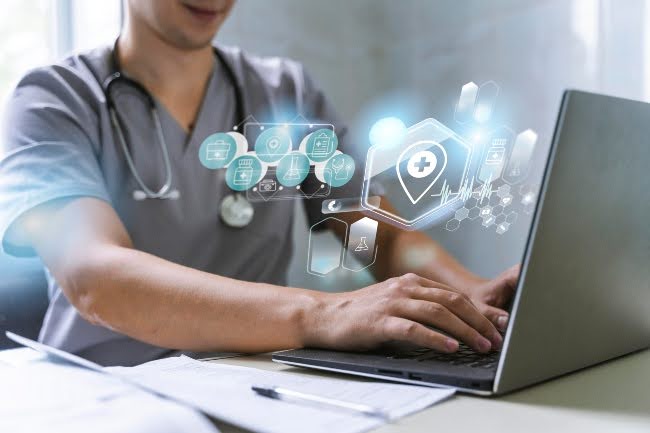
And what about regulatory compliance?
In addition to protecting sensitive data, Cybersecurity in hospitals is also a legal issue.. Regulations such as the General Data Protection Regulation (GDPR) or the NIS2 Directive require healthcare organizations to implement protection measures and demonstrate that they have taken appropriate actions to prevent security breaches.
Solutions like Kartos are especially useful here. They allow hospitals to continuously record threat exposure and implement corrective actions, which enhances security and facilitates audits, inspections, and certification processes.
Cybersecurity in hospitals: defense against attacks, but also prevention
A good defense is not only based on building walls, but also on knowing where attackers can enter. In a healthcare environment, where people's lives are at stake, prevention is as important as the response.
Adopting efficient solutions allows hospitals to act before a crisis occurs.. The best thing is that they do not require complex integrations or changing how IT teams work since the tool operates from the outside, with total autonomy.
Enthec, a company specialized in cyber surveillance, offers technology and strategic support to anticipate risks and maintain constant vigilance.
The human and technological challenge
Awareness of healthcare personnel is also key.. Many security breaches begin with clicking on a malicious link or using a weak password. Therefore, cybersecurity solutions must be part of the hospital culture, as hygiene or patient care are.
Kartos helps in that process by offering precise and actionable reports that allow training internal teams, prioritizing efforts, and establishing more effective security policies.
Hospitals are places of care; we cannot allow digital threats to compromise operations. Cybersecurity in hospitals is neither a luxury nor a fashion but an urgent need that must be addressed with modern tools, strategic vision, and constant commitment.
Kartos provides real-time vision that allows hospitals to anticipate problems and keep patient data where it should be: safe, secure, and available only to those who need it.
Do you want to know how to better protect your hospital against digital threats? Find out more about our Kartos solution.
What is doxing, and how to prevent your personal data from being exposed on the Internet
The Internet is a space where we share information daily. Social networks, forms, online purchases… Each action leaves a slight digital trace. Most of the time, we are unaware of how much we reveal about ourselves. This is where an increasingly well-known (and feared) concept comes into play: doxing.
What is doxing, and why should you care?
Doxing (abbreviation of dropping dox or 'release documents') refers to the public exposure of a person's data without their consent. We talk about addresses, telephone numbers, workplaces, private photos, emails, real names, and even financial or family information.
These types of attacks, which initially emerged in particular online communities, have spread in recent years and can have serious consequences: from harassment, threats, and identity theft, to the loss of employment or the appearance of legal problems.
Doxing on the Internet is not a simple hacker's game:It is a form of digital violence. And it can affect anyone.
Qondar: a solution that helps you protect your digital privacy
Before continuing, it is worth stopping at our featured tool: Qondar, a solution for personal cyber surveillance.
Qondar has been developed for anyone who wants to maintain control over their information on the network without needing advanced technical knowledge. It works like a Continuous Threat Exposure Management (CTEM) platform. It lets you detect if your data is being shared without permission in forums, leaked databases, social networks, or even the dark web.
Even if you don't know what doxing on the internet is, you too may suffer from an attack. If so, Qondar will tell you before it's too late.
Why does someone decide to dox another person?
There is no single attacker profile, nor a single motivation. Doxing, as this phenomenon is also known, can have many faces:
- Personal revenge: Ex-partners, ex-friends, or work conflicts can lead to malicious leaks.
- Extreme ideology or activism: Some users publish data about opponents to intimidate or silence them in political or social debates.
- Practical jokes or viral challenges: especially among teenagers or in toxic online communities.
- Extortion and blackmail: Once they have your data, some attackers try to obtain money or favors in exchange for not disclosing it.
Whatever the reason, the result is the same: your privacy and security are compromised.

What type of data is typically exposed when doxing?
Although the degree of exposure varies, the most common data that is published or sold in doxing cases are:
- Full name and physical address
- Phone number
- Profiles on social networks
- Personal photos
- Information about the family environment
- Employment or academic data
- Purchase or search history
A simple search in filtered databases (such as those found on the dark web) can be enough to create a detailed profile of a person. That's why prevention is key.
How to avoid being doxed: good practices to protect your privacy
To know how to protect yourself from doxing involves changing certain digital habits.. Here are some practical tips that you can start applying today, now that you understand what doxing is:
1. Check your social networks
- Use strict privacy settings.
- Avoid sharing personal information such as your address or your children's school.
- Do not post photos of documents or screenshots with sensitive data.
You may be interested→ 5 security strategies on social networks.
2. Use strong and unique passwords
- Don't repeat passwords across multiple services.
- Enable two-step authentication (2FA) whenever possible.
3. Be careful with online forms and contests
- Do you need to give out your phone number to enter that giveaway?
- Use secondary or temporary emails when possible.
4. Avoid heated discussions in public forums
- Many victims of doxing end up being attacked for their opinions.
- Participate respectfully and avoid sharing unnecessary details.
5. Do searches about yourself
- Type your first and last name in search engines to see what appears.
- Use tools like Qondar to get a complete view of your online exposure and receive alerts if anything changes.
What do you do if you have been doxed?
It may finally happen even if you have done everything possible to avoid being doxed. In this case, the most important thing is to act quickly:
- Document everything that has been published (captures, links, etc.).
- Contact the platforms where the information has been disclosed and request immediate withdrawal.
- Report the case to the Police and authorities, especially if there are threats or blackmail.
- Go to your national Data Protection Agency if your rights have been violated.
- Receive psychological support if the emotional impact has been substantial. Digital bullying can seriously affect mental health.
Is there a definitive solution?
The reality is that there is no 100% foolproof barrier. But yes, you can minimize your exposure and protect yourself from doxing to be prepared for any threat.
This is where Continuous Threat Exposure Management (CTEM) solutions, like Qondar, come into play. This tool offers you something that few solutions provide: active and personalized digital identity monitoring.
Knowing when and where your information appears allows you to act before it's too late. What is not controlled on the Internet can get out of hand in seconds.
Now that you know what doxing is, it is not a distant concept exclusive to celebrities or public figures. Anyone can be a victim. And in a society as hyperconnected as the current one, shielding our personal information has become a necessity, not a luxury.
Luckily, there are tools available to everyone to avoid this. If you are looking for an effective way to protect yourself from doxing and keep your digital identity under control, Qondar by Enthec is a solution that can help you sleep more peacefully.
Your privacy is not a simple detail to consider; it is part of your security. Start caring for her today with Qondar.
Enthec obtains ISO 27001 International Certification
Continuing with our philosophy of ensuring the protection of our clients and partners, we are proud to say that Enthec Solutions has completed the ISO 27001 certification process, which AENOR handled. This international certification allows us to offer better security standards to our clients.
ISO 27001 is a globally recognized information security standard developed and maintained by the International Organization for Standardization (ISO). It focuses on providing an information security management system (ISMS) specification.
Organizations using an ISO 270001-compliant ISMS ensure compliance with various laws regulating information security, including the GDPR and the Network and Information Systems Regulations, or MIS regulations.
Since our beginnings, Enthec Solutions has been committed to the security of our clients as the basis of trust in the business relationship, both in our advanced offer of cybersecurity solutions and in our own company.
This commitment is fulfilled, on the one hand, thanks to the absolute control of the development and operation of our solutions: our entire offer is made up of cybersecurity solutions that use technology developed entirely by our team and without back doorssince they do not depend on third parties at any time. A characteristic that makes us unique within the cybersecurity software development sector. On the other hand, it can be done through the most prestigious national and international security certifications, such as the ENS High Level or ISO 27001.
Once this new certification process is completed, at Enthec Solutions, we will continue seeking the most advanced paths to protect our company and develop the most advanced technology solutions to protect our clients.

Due Diligence in cybersecurity: How to protect your company during an audit?
The word 'audit' usually causes some tension in any company. Whether for legal, financial, or technical reasons, any external review necessitates a critical examination of our processes.
And when we discuss cybersecurity audits,the tension escalates. Are we protected? Do we know where our weaknesses are? What if the auditor finds an open door?
This is where cybersecurity due diligence comes into playan essential process to prepare your company for this type of evaluation. Beyond legal compliance, it is about protecting critical assets, reputation, and, above all, the trust of your clients and partners.
What is cybersecurity due diligence?
When a company undergoes a due diligence audit, whether for an investment, a merger, or to comply with regulations, one of the key aspects that is analyzed is the state of its cybersecurity.. Internal policies, incident response protocols, network configurations, and the storage of sensitive data are reviewed, among other relevant aspects.
Due diligence seeks to identify risks before they become problems.. In the digital context, this means detecting web vulnerabilities before an attacker does.
For example, typical examples of due diligence may include reviewing the security of connected devices (IoT), analyzing remote access, protecting personal data, or ensuring the company's visibility on the dark web.
Now, how can an organization prepare so that this review does not become an endless list of failures?
Before the audit: visibility and prevention
This is where tools like Kartosby Enthec play a fundamental role. This is a Continuous Threat Exposure Management (CTEM) solution designed for companies that want to know, in real-time, what attack surface they are presenting to the world.
That is, what information, configurations, or failures are visible from the outside, in the same way that a potential attacker or auditor sees them.
And this is no small thing. During the due diligence process, one of the most common mistakes is relying solely on internal measures or static reports.. However, threats evolve daily, just as a company's digital footprint does.
Kartos enables continuous monitoring, detecting everything from leaked passwords to exposed services, poorly configured repositories, and even vulnerabilities in IoT devices, such as surveillance cameras, sensors, and routers.

What can (and cannot) a due diligence audit detect?
In the same way that a penetration test, or pentesting, occurs,traditional cybersecurity due diligence has a limited scope. Although it allows you to identify technical, regulatory, or process risks at a specific point in time, it does not provide a continuous or dynamic view of the company's actual exposure status.
It's like taking a static photo of a network at a specific moment. However, the threats persist, and the attack surface evolves with each new configuration, vendor, employee, or service that comes online.
This is where Kartos shines.. This tool detects which weaknesses can be seen from outside in real time:
- Leaked credentials in databases or forums.
- Misconfigured utilities or exposed.
- Forgotten subdomains or without protection.
- Expired digital certificates.
- Known vulnerabilities in systems accessible from the Internet.
- Information that is visible in open sources and on the dark web.
But the most important thing is not only what it detects, but what due diligence cannot detect if it is not complemented. Without continuous monitoring, any audit becomes obsolete the moment it is completed.
Therefore, the due diligence process needs to be supplemented with tools like Kartos to cover the remaining risk areas. Only in this way can we speak of a complete vision.
Why do IoT vulnerabilities escape traditional due diligence?
One of the most common blind spots in due diligence audits is the Internet of Things (IoT) devices. Cameras, sensors, printers, and routers are all integral components of a company's digital ecosystem; however, many of them are not properly audited or managed.
And this is a problem. According to data from Kaspersky (2023), attacks on IoT devices grew by 41% in a single year.. Many of them exploited default passwords, outdated firmware, or open ports that had not been checked.
The most worrying thing? These types of errors are not always visible during a traditional due diligence process, especially if they are not integrated into a clear policy or are not part of the official inventory.
With Kartos, these elements are brought into focus, as the tool analyzes what is visible from the outside, just as an attacker or external researcher would do.. This allows critical input vectors to be detected before they generate an incident… or before an auditor flags them as a serious threat.
What does the cybersecurity due diligence process include?
Although it varies depending on the type of audit, a typical process usually includes:
1. Document review
Security policies, contingency plans, internal training, and other relevant measures. Here we analyze whether the company has clear rules and applies them.
2. Technical analysis
Network scans, log reviews, malware detectionpenetration tests, and more. In this phase, fundamental weaknesses are detected.
3. Exposure assessment
This point is key and often ignored. It attempts to analyze what information is visible from the outside, such as external access, open services, and data leaks. Precisely, Kartos' strong point.
4. Risk assessment
With all of the above, a risk map is generated that enables informed decisions to be made, such as reinforcing measures, prioritizing investments, or even pausing operations if the level of exposure is extremely high.
You may be interested→ Cybersecurity risk management for C-levels.
What are the benefits of getting ahead of the audit?
Preparing ahead of time not only reduces stress but also enhances the company's position with investors, partners, or buyers.. Additionally, it allows:
- Anticipate problems before third parties detect them.
- Enhance your security posture without last-minute rushes.
- Increase confidence in strategic business decisions.
And above all, it transmits an image of technological maturity, which in 2025 is more critical than ever.
Enthec: ally during the due diligence process
Enthec not only offers cybersecurity solutions like Kartos (for companies) and Qondar (for individual users), but also provides tranquillity. The possibility of knowing, at any time, how exposed your organization is. To receive alerts before the media does. To anticipate, instead of react.
Because in cybersecurity, information is power, but continuous monitoring is a matter of survival.
If you are preparing an audit or want to assess the visibility of your weaknesses, it's time to talk to Enthec.
Cybersecurity audits are not a luxury, but a necessity. Due diligence should not be seen as a threat, but rather as an opportunity to strengthen our systems, learn from our weaknesses, and demonstrate to the market that we are prepared.
Because, ultimately, it is not just about passing an audit, but about building a safe, solid, and sustainable company.
IoT and cybersecurity: Risks and strategies to protect connected devices
We live in an era where everything is interconnected. From our smart watches to the home thermostat, including surveillance cameras, speakers, locks, and even the refrigerator. This interconnection, known as the Internet of Things (IoT), makes our lives easier in many ways.
Cybersecurity in IoT, is, today more than ever, a real need. The exponential growth in the number of connected devices has led to an increase in vulnerabilities and attacks.
It's not just about protecting personal data; we're also talking about physical security, privacy, business reputation, and even operational continuity in companies that rely on IoT for their processes.
Cybersecurity in IoT is not optional
According to a Kaspersky report, in the first half of 2023, there was a significant increase in threats targeting IoT devices, including DrDoS attacks, DDos, ransomware, and other types of malware that exploit common vulnerabilities such as default passwords and insecure network services.
And that's just the tip of the iceberg. Many devices are not correctly configured, use weak passwords, or continue to run on outdated software.
One of the biggest mistakes is assuming that an IoT device is harmless because it does not store sensitive data. But it only needs to be connected to the same network as other, more critical equipment for it to become a gateway to the system.
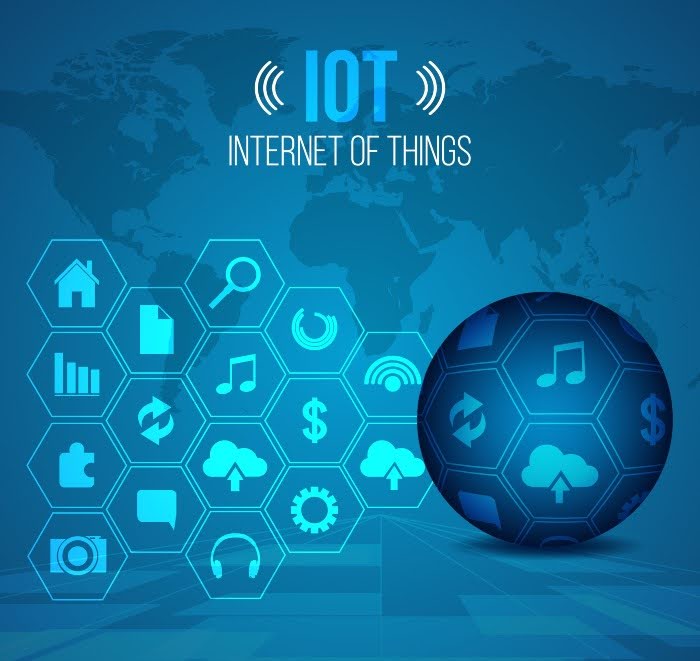
What types of vulnerabilities are common in the IoT?
The threats affecting the IoT ecosystem are varied, but many share a familiar pattern: lack of basic protection.. Some examples:
- Default passwords.. Many IoT devices come with factory credentials that users never change.
- Unnecessary open ports.. Access that allows attackers to explore and manipulate the device easily.
- Non-existent or manual updates.. Many manufacturers do not offer automatic updates, leaving their devices vulnerable to known security flaws.
- Unencrypted communication.. Some devices transmit information in plain text, making it easier for third parties to intercept and read the data.
- Poor network segmentation.. Using the same network for IoT devices and personal computers or servers makes it easier for a breach to affect the entire system.
The importance of a global vision: IoT cybersecurity in companies
In the business environment, these vulnerabilities can have a devastating impact. Let's consider a factory that automates processes using sensors, cameras, and interconnected equipment. A single compromised device can paralyze production or leak strategic information.
This is where having advanced surveillance and threat analysis tools, such as Kartos, Enthec's business solution, is crucial.. Kartos enables you to identify vulnerabilities, such as leaked credentials on the dark web, exposed devices, or data leaks related to the company's connected assets.
Kartos provides Continuous Threat Exposure Management (CTEM), offering a real-time, updated, and comprehensive view of the company's exposure level.
Kartos not only detects but prioritizes the most relevant risks for the business and recommends concrete actions to mitigate each threat. This is especially useful for IT and cybersecurity managers, as it allows them to make quick and informed decisions.
Do you want to know your company's level of exposure in real-time? Contact us to discover how Kartos can help you protect your IoT infrastructure from exposed leaks and open breaches.
IoT risks: beyond data
Security in IoT extends far beyond preventing information theft. Some of the IoT risks most relevant include:
- Unauthorized access to security cameras that can be used for spying or blackmail.
- Manipulation of sensors or automated systems, generating interruptions or physical damage.
- Using devices as bots in massive attacks (DDoS) without the user being aware.
What can we do? Strategies to improve cybersecurity in IoT
Basic measures that every user should adopt
- Change default passwords and use strong keys.
- Update the firmware of devices regularly.
- Disable unused features, such as remote administration.
- Separate the networks, creating an exclusive network for IoT devices.
- Review the permissions and access of each team.
Strategies for companies
- Inventory all IoT devices connected to the network.
- Implement cybersecurity solutions and cyber surveillance tools, such as Kartos, which identify exposed devices and leaks in real-time.
- Apply network segmentation policies to isolate vulnerable devices.
- Establish strong access controls and multi-factor authentication.
- Continuously monitor exposure to external threats, without relying solely on periodic audits.
And private users?
We cannot forget that homes are also increasingly complex IoT environments. For them, Enthec has developed Qondar, a customized CTEM solution for individuals.
Qondar enables anyone to verify if their credentials have been compromised, if their devices are publicly exposed, and even, beyond IoT technology, if there is any trace of their digital identity circulating in insecure environments. A handy tool for enhancing privacy and safeguarding against malicious uses of information and emerging technologies, such as IoT.
Prevention is cheaper than disaster
Investing in IoT cybersecurity is not an expense, but a wise investment.. The costs derived from a security breach (reputational damage, business interruptions, legal sanctions...) can far exceed any budget allocated to protection.
Additionally, being one step ahead in risk management allows companies to innovate with confidence, knowing that their digital environment is protected. And that translates into a competitive advantage.
Digital transformation is here to stay, and the Internet of Things (IoT) is a crucial component of this change. However, every new technology comes with its own set of risks. Shielding security in IoT should be a top priority for both companies and individuals.
Solutions like Kartos and Qondar by Enthec stand out in the way we manage those risks. It's not just about protecting devices: it's about protecting everything behind them.
Do you want to start protecting your connected devices today?
Discover how Enthec can assist you with tailored solutions that meet your specific needs.
Compliance with CRA regulation: How can you achieve it in your company?
The CRA regulation (Cyber Resilience Act) is one of the terms that is being heard increasingly in the European business environment, especially in IT and security departments. And it's no wonder.
This new legal framework aims to reinforce products' digital security with digital elements marketed in the European Union.
But what does this mean for your business? What practical implications does the CRA regulation have in your daily life? And how can you comply with it without making it an unsustainable burden on your technical teams?
Before getting into the matter, it is worth remembering that, although this type of regulation may seem complex in its initial approach, it also represents an opportunity: to improve your cybersecurity maturity, better protect your digital assets, and gain trust from clients and strategic partners.
This is where Enthec comes into play.Enthec is a company that specializes in cyber surveillance and continuous threat exposure management (CTEM) solutions. Our solution, Kartos, is aimed at companies and allows for proactively identifying, monitoring, and managing external exposure risks.
What is CRA regulation?
The CRA regulation, or cyber resilience regulation, is a legislative proposal of the European Union that seeks to ensure the safety of products with digital components throughout their life cycle.
This horizontal regulation affects all types of devices connected to the internet,from business management software to smart home appliances. The objective is clear: prevent security flaws from becoming entry points for attackers.
This cyber resilience law requires manufacturers, distributors, and importers to comply with a series of security requirements, including:
- Risk assessment before launching the product.
- Active vulnerability management.
- Transparency about security incidents.
- Security updates throughout the life of the product.
According to a report from the European Union Agency for Cybersecurity (ENISA), over 50% of attacks in Europe originate from known vulnerabilities that remain unpatched.
Who is affected by the CRA regulation?
Although it may seem that only technology companies should worry, any organization that markets products with digital elements within the EU is subject to this regulation.
That includes:
- Software manufacturers.
- Companies that integrate digital systems.
- Connected hardware distributors.
- To a lesser extent, business users obliged to demonstrate good practices in the digital supply chain.
In this sense, if your company integrates third-party software In this sense, if your company integrates third-party software into its processes, you should check that these suppliers are aligned with the standards of the CRA regulation. If they fail, the problem can also reach your business. Through our third-party license, you will be able to manage these types of relevant issues.
You may be interested→ Keys to carrying out supplier evaluation: how to manage third parties in your company.

How can compliance with the CRA regulation be achieved?
Compliance with the CRA regulation is not a one-day task but a continuous process that requires planning, resources, and strategic vision. Here we leave you some keys to address it successfully:
1. Assess your exposure to digital threats
Before implementing any measures, you should know your organization's attack surface,. what digital assets are exposed, what the weakest points are, and what services are available on the Internet without need.
With tools like Kartos, you can have a clear and up-to-date view of your exposure and make decisions based on concrete data.
2. Classify risks and prioritize actions
Not all risks are the same or have the same impact. An effective compliance policy must include a classification system by criticality levels. This allows you to prioritize correcting those vulnerabilities that pose the greatest danger.
3. Implement a CTEM strategy
One of the best ways to comply with the CRA regulation is to adopt a Continuous Threat Exposure Management model (CTEM). This strategy is based on:
- Constantly identify new threats
- Validate the effectiveness of your security controls.
- Automate detection and response processes.
Through Kartos, we offer a CTEM-based approach that perfectly fits this need.
4. Train your team
Having the best tools is not much use if your team is unprepared. Continuous cybersecurity training is essential so that all members of your organization understand their role in digital protection.
Furthermore, the cyber resilience culture should not be limited to the IT area: it must be present in the DNA of the entire company.
5. Document and audit
The cyber resilience regulation requires transparency. Therefore, it is essential to document security actions,implemented controls, and recorded incidents. This will ensure you have all the necessary support if an audit occurs or a decision must be justified.
Benefits of complying with the CRA regulation
Although it may seem like just another obligation, the truth is that compliance with the CRA regulation can become a competitive advantage:
- Improves your brand reputation.
- Increases the confidence of customers and partners.
- Reduces the risk of sanctions and economic losses.
- Prepares you for future similar regulatory frameworks.
Plus, keeping your digital exposure under control minimizes the chances of suffering cyber attacks, which cause billions of euros in yearly losses, according to data from Cybersecurity Ventures.
Kartos: your ally in compliance
You are not alone in this process. Enthec offers solutions designed to help you address all of these challenges. With Kartos, you can:
- Continuously detect external threats.
- Prioritize corrective actions.
- Comply with the requirements of the cyber resilience regulation more simply.
Adapting to the CRA regulation should not be seen as a burden but as an opportunity to improve your company's cybersecurity posture.. The sooner you start, the better prepared you will be to face the digital challenges that lie ahead.
At Enthec, we know security is not static. That's why we offer tools that evolve with your company.
Do you want to see how Kartos can help you comply with CRA regulations simply and effectively? Contact us to start working together.



